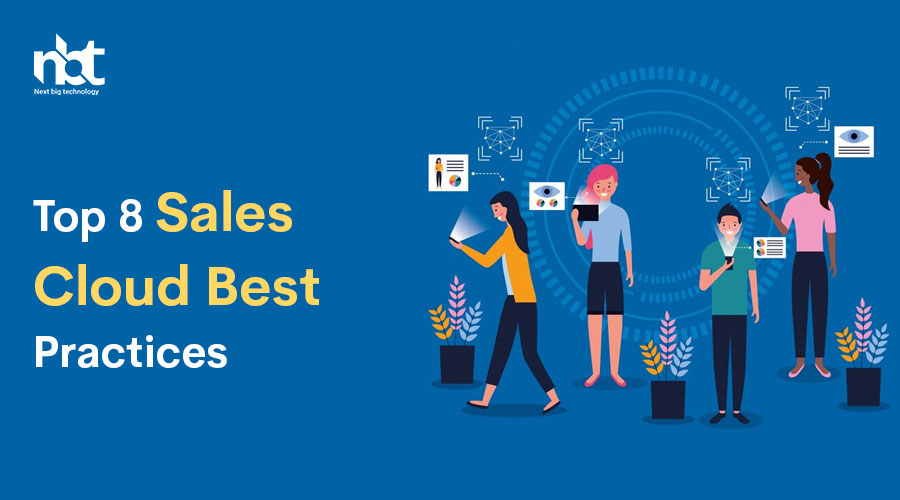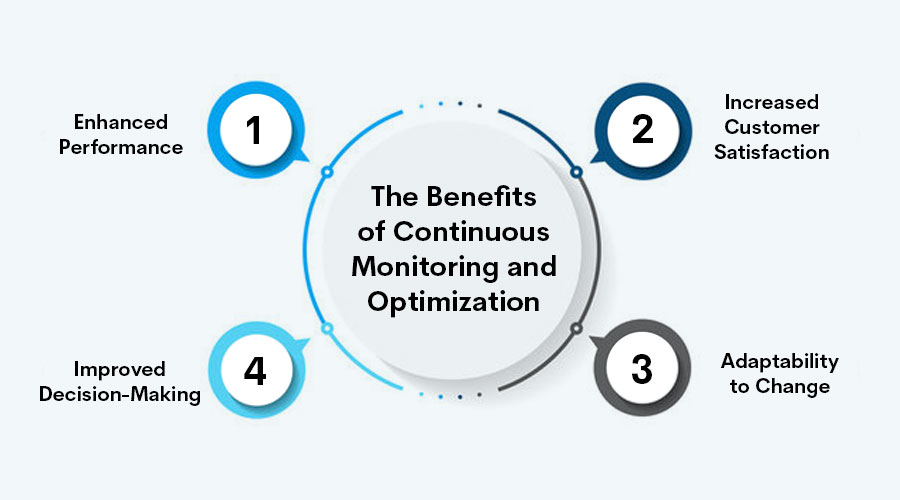Table of Contents
Understanding Your Sales Process
In the realm of business, sales are the heartbeat that keeps the organization pulsating with vitality and growth. Understanding and optimizing your sales process is akin to fine-tuning the engine of success. It’s not merely about closing deals but rather about orchestrating a symphony of interactions, strategies, and insights that lead to sustainable business growth. In this comprehensive guide, we delve into the nuances of comprehending and perfecting your sales process.
Defining the Sales Process
At its core, the sales process encapsulates the journey that a potential customer traverses from being a lead to making a purchase. While this journey might vary across industries and businesses, it typically follows a set of stages:
- Prospecting: Identifying potential customers who have a need or desire for your product or service.
- Qualifying: Assessing the prospect’s suitability as a potential customer based on criteria like budget, authority, need, and timeline (BANT).
- Engagement: Initiating contact and building rapport with the prospect through personalized interactions.
- Presentation: Demonstrating how your product or service fulfills the prospect’s needs or solves their problems.
- Handling Objections: Addressing concerns and objections raised by the prospect to alleviate doubts and build trust.
- Closing: Securing commitment from the prospect to proceed with the purchase.
- Follow-up: Nurturing the relationship post-sale to encourage repeat business and referrals.
Importance of Understanding Your Sales Process
A thorough comprehension of your sales process is indispensable for several reasons:
- Efficiency: Understanding each stage of the sales process enables you to streamline operations, optimize resources, and minimize wastage of time and effort.
- Effectiveness: By identifying bottlenecks and inefficiencies, you can implement targeted strategies to enhance conversion rates and overall performance.
- Predictability: A well-defined sales process provides a framework for forecasting sales, predicting revenue, and setting realistic targets.
- Continuous Improvement: Armed with insights into the sales process, you can iteratively refine and improve your strategies to adapt to evolving market dynamics and customer preferences.
Key Components of a Sales Process
- Clear Objectives: Define specific, measurable goals for each stage of the sales process to provide clarity and direction to your sales team.
- Customer-Centric Approach: Tailor your sales process to align with the needs, preferences, and buying behavior of your target audience.
- Effective Communication: Equip your sales team with the necessary skills and tools to communicate persuasively, actively listen, and empathize with prospects.
- Data-driven Decision Making: Leverage data analytics and insights to identify trends, patterns, and opportunities for optimization within your sales process.
- Continuous Training and Development: Invest in ongoing training and development programs to equip your sales team with the latest tools, techniques, and best practices.
- Feedback Loops: Establish mechanisms for collecting feedback from both customers and internal stakeholders to identify areas for improvement and innovation.
Aligning Sales Cloud with Business Objectives
In today’s fast-paced and ever-evolving business landscape, aligning sales strategies with overarching business objectives is paramount for sustainable growth and success. With the advent of advanced technologies, companies are leveraging innovative tools like Sales Cloud to streamline their sales processes, enhance customer relationships, and drive revenue. However, the true potential of Sales Cloud can only be realized when it is seamlessly integrated with the broader business objectives. Let’s delve deeper into the importance of aligning Sales Cloud with business objectives and how to achieve this synergy effectively.
- Understanding Business Objectives: Before integrating Sales Cloud into your operations, it’s crucial to have a clear understanding of your business objectives. These objectives can vary from increasing market share, boosting profitability, expanding into new markets, or enhancing customer satisfaction. By aligning Sales Cloud with these objectives, you ensure that every sales effort contributes directly to the overarching goals of the organization.
- Customization and Configuration: Sales Cloud offers a plethora of customizable features and functionalities to cater to diverse business needs. Utilize these capabilities to tailor Sales Cloud according to your specific business requirements and objectives. Whether it’s configuring sales pipelines, defining lead scoring criteria, or automating sales processes, customization ensures that Sales Cloud aligns perfectly with your unique business model.
- Data-Driven Decision Making: One of the key advantages of Sales Cloud is its ability to collect, analyze, and interpret vast amounts of sales data. By leveraging this data effectively, businesses can gain valuable insights into customer behavior, market trends, and sales performance. Align Sales Cloud with your business objectives by utilizing data analytics to make informed decisions, optimize sales strategies, and identify areas for improvement.
- Integration with Other Systems: In today’s interconnected business environment, Sales Cloud cannot operate in isolation. It needs to seamlessly integrate with other systems and applications used across the organization, such as marketing automation platforms, customer relationship management (CRM) systems, and enterprise resource planning (ERP) software. Integrating Sales Cloud with these systems ensures a unified approach towards achieving business objectives, facilitating seamless data flow and collaboration across departments.
- Continuous Monitoring and Optimization: Aligning Sales Cloud with business objectives is not a one-time task but an ongoing process that requires continuous monitoring and optimization. Regularly assess the performance of Sales Cloud against predefined metrics aligned with your business objectives. Identify areas of improvement, adjust strategies accordingly, and leverage new features and updates rolled out by the platform to stay ahead of the curve.
- Employee Training and Adoption: A successful alignment of Sales Cloud with business objectives hinges on the proficiency and engagement of your sales team. Provide comprehensive training to ensure that your sales representatives are well-versed in using Sales Cloud to its full potential. Encourage adoption by highlighting the benefits of aligning sales efforts with broader business goals, fostering a culture of accountability, and recognizing and rewarding achievements.
Customizing Sales Cloud for Your Organization
In today’s rapidly evolving business landscape, organizations are constantly seeking ways to enhance efficiency, streamline processes, and maximize revenue. One powerful solution that facilitates these objectives is Salesforce Sales Cloud. With its robust features and customizable options, Sales Cloud empowers businesses to tailor their CRM platform to meet their specific requirements and achieve optimal results.
Understanding Your Organization’s Unique Needs
Before delving into customization, it’s crucial to gain a comprehensive understanding of your organization’s distinct requirements and objectives. This involves assessing your current sales processes, identifying pain points, and envisioning the desired outcomes. By pinpointing areas for improvement and defining clear goals, you can effectively customize Sales Cloud to align with your business objectives.
Customization Options in Sales Cloud
Sales Cloud offers a myriad of customization options that enable organizations to adapt the platform to their unique workflows and preferences. Some key customization features include:
- Custom Objects and Fields: Tailor Sales Cloud to your specific business model by creating custom objects and fields to capture essential data points relevant to your sales process. Whether it’s customer demographics, product details, or sales milestones, custom fields allow you to track and manage information according to your requirements.
- Workflow Automation: Streamline repetitive tasks and automate manual processes using Sales Cloud’s workflow automation capabilities. From lead assignment rules to email alerts and approval processes, automation frees up valuable time for your sales team to focus on high-value activities, such as nurturing leads and closing deals.
- Page Layouts and Record Types: Customize the user interface of Sales Cloud to match the unique roles and responsibilities within your organization. With customizable page layouts and record types, you can ensure that each user has access to relevant information and functionalities tailored to their specific needs.
- Reports and Dashboards: Gain valuable insights into your sales performance and track key metrics with customizable reports and dashboards in Sales Cloud. From pipeline analysis to forecasting and territory management, customizable reporting tools empower you to make data-driven decisions and optimize your sales strategy.
Best Practices for Customization
While customization offers immense flexibility, it’s essential to adhere to best practices to ensure a successful implementation. Here are some tips to maximize the effectiveness of your customization efforts:
- User Involvement: Involve end-users in the customization process to gain valuable insights and ensure that the final solution meets their needs and preferences.
- Start Small, Iterate: Begin with incremental changes and iterate based on feedback and evolving business requirements. This agile approach allows for continuous improvement and ensures that the customized solution remains aligned with your organization’s objectives.
- Training and Support: Provide comprehensive training and ongoing support to users to ensure smooth adoption of the customized Sales Cloud solution. Equipping your team with the necessary skills and resources is key to maximizing the benefits of customization.
Training and Onboarding for Sales Teams
In the competitive landscape of today’s business world, a well-trained and seamlessly onboarded sales team is indispensable. Sales teams are the driving force behind revenue generation, customer acquisition, and brand representation. However, without proper training and onboarding processes in place, even the most talented individuals can struggle to perform at their best. This article delves into the significance of training and onboarding for sales teams, offering insights and strategies to ensure success.
Understanding the Importance of Training and Onboarding: Effective training and onboarding set the foundation for success within any sales team. It’s not just about equipping individuals with product knowledge and sales techniques but also about instilling them with the company’s culture, values, and vision. Properly trained and onboarded sales representatives are more confident, motivated, and capable of delivering exceptional results.
Key Components of Training and Onboarding for Sales Teams:
- Product Knowledge: Comprehensive understanding of the product or service being sold is paramount. Sales reps should be well-versed in its features, benefits, and unique selling points to effectively communicate value propositions to potential customers.
- Sales Techniques and Strategies: Equipping sales teams with proven sales methodologies, negotiation tactics, and objection handling techniques empowers them to navigate various customer interactions with finesse.
- Technology Proficiency: In today’s digital age, familiarity with sales tools and technologies is essential. Training sessions should include hands-on experience with CRM software, communication platforms, and any other relevant tech tools to streamline sales processes.
- Role-playing and Scenario-based Training: Simulating real-life sales scenarios through role-playing exercises helps sales reps refine their communication skills, build confidence, and overcome common challenges they may encounter in the field.
- Continuous Learning and Development: Training should be an ongoing process rather than a one-time event. Encourage a culture of continuous learning by providing access to resources, workshops, and mentorship programs to help sales reps stay updated on industry trends and best practices.
Strategies for Effective Onboarding:
- Structured Onboarding Program: Develop a comprehensive onboarding program that covers all aspects of the sales role, company policies, and procedures. Break down the onboarding process into manageable modules to ensure thorough understanding and retention.
- Buddy System: Pair new hires with seasoned sales professionals who can serve as mentors and provide guidance throughout the onboarding process. This fosters a supportive environment and accelerates the integration of new team members.
- Feedback and Evaluation: Regular feedback sessions allow managers to assess the progress of new hires, identify areas for improvement, and provide constructive guidance. Encourage open communication and address any concerns or challenges proactively.
- Celebrate Milestones: Recognize and celebrate milestones achieved by new hires during the onboarding process. Whether it’s closing their first sale or mastering a new sales technique, acknowledging their progress boosts morale and motivation.
Implementing Effective Lead Management Strategies
In today’s competitive business landscape, effective lead management is the linchpin for sustainable growth. With a plethora of marketing channels and ever-evolving consumer behavior, businesses must adapt and implement robust lead management strategies to thrive. In this article, we delve into the essentials of implementing effective lead management strategies that drive conversions and foster long-term customer relationships.
Understanding Lead Management
Lead management encompasses the process of capturing, nurturing, and converting leads into loyal customers. It involves a systematic approach to tracking and managing interactions with potential customers across various touchpoints. Successful lead management not only focuses on acquiring leads but also on guiding them through the sales funnel, ultimately maximizing conversion rates and revenue.
Key Components of Effective Lead Management
- Lead Capture and Qualification: The journey begins with lead capture. Whether through website forms, social media engagement, or networking events, businesses must employ tactics to attract potential leads. However, not all leads are created equal. Effective lead management involves qualifying leads based on their level of interest, demographics, and fit with the product or service.
- Centralized Database: A centralized database serves as the nucleus of lead management efforts. It enables businesses to consolidate lead information, track interactions, and segment leads based on various criteria. Implementing a robust Customer Relationship Management (CRM) system facilitates seamless lead tracking and ensures no opportunity falls through the cracks.
- Lead Nurturing Campaigns: Not all leads are ready to make an immediate purchase decision. Lead nurturing campaigns play a pivotal role in cultivating relationships with leads over time. Through personalized email sequences, targeted content, and automated workflows, businesses can deliver relevant information and stay top-of-mind until leads are ready to convert.
- Scoring and Prioritization: Lead scoring helps prioritize leads based on their engagement level and propensity to purchase. By assigning scores to various actions such as website visits, email opens, and webinar attendance, businesses can identify high-value leads deserving of immediate attention from sales teams.
- Sales and Marketing Alignment: Effective lead management requires seamless collaboration between sales and marketing teams. Alignment ensures that marketing efforts are geared towards generating high-quality leads, while sales teams receive timely and qualified leads ready for conversion. Regular communication and shared goals are essential for fostering synergy between the two departments.
- Continuous Optimization: The journey towards effective lead management is iterative. Businesses must continually analyze data, identify bottlenecks, and refine strategies to enhance performance. A/B testing, analytics tracking, and customer feedback are invaluable tools for optimizing lead management processes.
Benefits of Effective Lead Management
- Improved Conversion Rates: By nurturing leads through personalized interactions and timely follow-ups, businesses can significantly increase conversion rates and maximize revenue opportunities.
- Enhanced Customer Experience: A well-executed lead management strategy focuses on understanding and addressing the needs of potential customers, thereby delivering a seamless and personalized experience at every touchpoint.
- Cost Efficiency: Targeting and prioritizing high-value leads reduces resource wastage on low-quality prospects, leading to cost savings and improved ROI.
- Long-Term Growth: Building strong relationships with leads fosters customer loyalty and advocacy, driving repeat business and referrals in the long run.
Integrating Sales Cloud with Other Systems
In today’s digital age, businesses rely heavily on seamless integration between various systems to streamline operations and enhance productivity. Among these systems, Sales Cloud stands out as a cornerstone for managing customer relationships and driving revenue growth. However, its true potential is unlocked when integrated with other key platforms within an organization’s ecosystem. In this article, we explore the benefits and best practices of integrating Sales Cloud with other systems.
Why Integrate Sales Cloud?
Sales Cloud, Salesforce’s flagship CRM platform, offers a comprehensive suite of tools for sales automation, lead management, and customer engagement. While powerful on its own, integrating Sales Cloud with other systems such as marketing automation, ERP, e-commerce, and customer service platforms can provide several advantages:
- 360-Degree View of Customers: Integrating Sales Cloud with systems like marketing automation and customer service enables a holistic view of customer interactions across various touchpoints. This comprehensive insight empowers sales teams to personalize their approach, anticipate needs, and provide better service.
- Streamlined Processes: Integration eliminates the need for manual data entry and facilitates the flow of information between different departments. By automating repetitive tasks and synchronizing data in real-time, businesses can streamline processes, reduce errors, and improve operational efficiency.
- Enhanced Data Accuracy: Integration ensures that data remains consistent and up-to-date across all systems. This improves data accuracy, eliminates discrepancies, and provides a single source of truth for decision-making.
- Improved Collaboration: Integration fosters collaboration between sales, marketing, finance, and customer service teams by breaking down data silos and enabling seamless communication. This alignment leads to better coordination, faster response times, and ultimately, improved customer satisfaction.
Best Practices for Integration
While the benefits of integrating Sales Cloud with other systems are undeniable, successful implementation requires careful planning and execution. Here are some best practices to ensure a smooth integration process:
- Define Clear Objectives: Clearly outline your integration objectives and identify the key systems that need to be integrated with Sales Cloud. Determine the data that needs to be shared between systems and establish KPIs to measure the success of the integration.
- Choose the Right Integration Method: Evaluate different integration methods such as point-to-point, middleware, or API-based integration, and choose the one that best suits your organization’s needs. Consider factors such as scalability, flexibility, and ease of maintenance.
- Prioritize Data Security: Implement robust security measures to protect sensitive customer data during the integration process. Utilize encryption, authentication, and access controls to ensure data privacy and compliance with regulatory requirements.
- Provide Training and Support: Invest in training programs to educate employees about the integrated systems and provide ongoing support to address any issues or concerns. Foster a culture of continuous learning and adaptation to maximize the benefits of integration.
- Monitor and Optimize Performance: Regularly monitor the performance of the integrated systems and gather feedback from users to identify areas for improvement. Continuously optimize processes, workflows, and configurations to enhance efficiency and drive better results.
Ensuring Mobile Accessibility and Optimization
In today’s digital age, ensuring mobile accessibility and optimization has become paramount for businesses striving to reach their target audience effectively. With the exponential growth of mobile users globally, providing a seamless experience across various devices is no longer an option but a necessity. In this article, we’ll delve into the importance of mobile accessibility and optimization and explore strategies to enhance user experience.
Understanding Mobile Accessibility
Mobile accessibility refers to the design and development of digital content and applications that can be easily navigated, understood, and operated by individuals with disabilities. It encompasses various aspects, including visual, auditory, motor, and cognitive accessibility. Adhering to mobile accessibility guidelines not only ensures inclusivity but also enhances usability for all users, ultimately improving engagement and conversion rates.
Importance of Mobile Optimization
Mobile optimization involves creating responsive designs and implementing technologies that enhance the performance of websites and applications on mobile devices. With the majority of internet users accessing content via smartphones and tablets, optimizing for mobile is crucial for delivering fast-loading pages, intuitive navigation, and a visually appealing layout. Failure to optimize for mobile can result in high bounce rates, decreased user satisfaction, and lost revenue opportunities.
Key Strategies for Mobile Accessibility and Optimization
- Responsive Design: Adopt a responsive design approach that adjusts the layout and content based on the user’s device, screen size, and orientation. This ensures a consistent and optimized experience across various platforms.
- Optimize Page Speed: Minimize loading times by optimizing images, leveraging browser caching, and reducing unnecessary scripts. Fast-loading pages not only improve user experience but also contribute to higher search engine rankings.
- Clear Navigation: Simplify navigation menus and buttons to facilitate easy access to essential content. Utilize clear labels and intuitive icons to guide users seamlessly through the site or application.
- Accessible Content: Ensure that content is accessible to users with disabilities by providing alternative text for images, captions for videos, and transcripts for audio content. Use semantic HTML to enhance screen reader compatibility and improve overall accessibility.
- Touch-Friendly Interactions: Design touch-friendly elements such as buttons and links with an adequate size and spacing to accommodate users with varying motor abilities. Avoid relying solely on hover interactions, as they may not translate well to touch screens.
- Optimized Forms: Simplify form fields and utilize input masks and validation techniques to streamline the data entry process on mobile devices. Implement autofill functionality to reduce user effort and minimize errors.
- Device Testing: Conduct thorough testing across multiple devices, operating systems, and screen resolutions to identify and address any compatibility issues or performance bottlenecks. Regular testing ensures a seamless experience for all users, regardless of their device preferences.
Establishing Clear Sales Territories and Hierarchies
In the dynamic realm of sales, success hinges not only on the prowess of individual salespeople but also on the strategic alignment of territories and hierarchies. Establishing clear sales territories and hierarchies is akin to drawing up a blueprint for efficiency, productivity, and ultimately, profitability. In this comprehensive guide, we delve into the essential strategies and best practices to master this critical aspect of sales management.
Understanding Sales Territories:
Sales territories delineate geographical regions or customer segments assigned to individual sales representatives. Crafting well-defined territories is vital for optimizing sales efforts and maximizing revenue potential. Here’s how to approach it:
- Data-Driven Analysis: Start by analyzing pertinent data such as customer demographics, purchasing behavior, and geographic proximity. Utilize CRM systems, market research, and analytics tools to glean insights into where your target market is concentrated.
- Balancing Workload: Ensure equitable distribution of accounts among sales reps to prevent overload or underutilization. Factors to consider include account complexity, revenue potential, and sales rep capacity.
- Flexibility: While defining territories, allow room for flexibility to accommodate changes in market dynamics, business expansion, or shifts in customer preferences. Regularly reassess and adjust territories as needed to optimize performance.
Establishing Sales Hierarchies:
Sales hierarchies outline the organizational structure within the sales team, delineating roles, responsibilities, and reporting lines. A well-structured hierarchy fosters clarity, accountability, and synergy across the sales organization:
- Role Definition: Clearly define roles and responsibilities at each level of the sales hierarchy, from sales representatives to managers and executives. Ensure alignment with organizational goals and objectives.
- Clear Reporting Lines: Establish clear reporting lines to facilitate communication, decision-making, and accountability. Sales reps should know whom to report to for guidance, support, and performance evaluation.
- Training and Development: Invest in ongoing training and development programs to empower sales professionals at every level of the hierarchy. Provide opportunities for skill enhancement, leadership development, and career advancement.
Leveraging Technology:
Harnessing the power of technology can streamline the process of establishing and managing sales territories and hierarchies:
- CRM Solutions: Implement robust Customer Relationship Management (CRM) software to centralize customer data, track sales activities, and manage territories effectively. Leverage advanced features such as territory mapping and predictive analytics for informed decision-making.
- Sales Force Automation: Automate routine tasks such as lead management, territory assignment, and performance tracking with Sales Force Automation (SFA) tools. This frees up time for sales reps to focus on high-value activities like building relationships and closing deals.
- Analytics and Reporting: Leverage data analytics and reporting tools to gain actionable insights into sales performance, territory optimization, and hierarchy effectiveness. Use these insights to refine strategies, allocate resources efficiently, and drive continuous improvement.
Continuous Monitoring and Optimization of Sales Processes
In the dynamic realm of sales, success isn’t just about closing deals; it’s about consistently refining and perfecting your approach. Continuous monitoring and optimization of sales processes have become imperative for businesses striving to stay competitive in today’s fast-paced market landscape. This article delves into the significance of ongoing evaluation and enhancement in sales strategies and how it can lead to amplified success.
Understanding Continuous Monitoring and Optimization
Continuous monitoring involves the systematic observation and analysis of various aspects of the sales process in real-time. It encompasses tracking key performance indicators (KPIs), evaluating sales metrics, and scrutinizing customer interactions to gain valuable insights into the effectiveness of existing strategies.
Optimization, on the other hand, focuses on refining and improving sales processes based on the findings from continuous monitoring. It involves implementing changes, experimenting with new techniques, and adapting to evolving market trends to enhance overall performance and efficiency.
The Benefits of Continuous Monitoring and Optimization
- Enhanced Performance: Regularly assessing sales processes allows businesses to identify areas of improvement and implement targeted solutions to boost performance. Whether it’s streamlining workflows, refining communication strategies, or optimizing sales funnels, continuous optimization leads to tangible enhancements in productivity and profitability.
- Improved Decision-Making: Data-driven insights derived from continuous monitoring empower sales teams to make informed decisions. By analyzing trends, identifying patterns, and predicting customer behavior, organizations can tailor their strategies to meet evolving market demands, resulting in more effective decision-making and resource allocation.
- Increased Customer Satisfaction: By continuously optimizing sales processes, businesses can better understand and anticipate customer needs, leading to enhanced satisfaction and loyalty. Whether it’s personalizing interactions, resolving pain points, or providing timely support, ongoing optimization ensures that customer-centricity remains at the forefront of sales efforts.
- Adaptability to Change: In today’s volatile market landscape, adaptability is key to sustained success. Continuous monitoring and optimization enable businesses to quickly adapt to changing market dynamics, emerging trends, and competitive threats, ensuring agility and resilience in the face of uncertainty.
Implementing Continuous Monitoring and Optimization
- Define Key Metrics: Identify relevant KPIs and metrics that align with your sales objectives, such as conversion rates, lead generation, customer acquisition costs, and customer lifetime value.
- Utilize Technology: Leverage advanced analytics tools, CRM systems, and automation platforms to collect, analyze, and interpret data efficiently. These technologies provide valuable insights into sales performance and facilitate data-driven decision-making.
- Encourage Collaboration: Foster a culture of collaboration and innovation within your sales team. Encourage open communication, share insights, and solicit feedback to facilitate continuous improvement and optimization.
- Iterate and Experiment: Embrace a mindset of experimentation and iteration. Test different strategies, tactics, and approaches, and measure their impact on sales performance. Continuously refine and optimize processes based on the outcomes of these experiments.
- Stay Agile: Remain flexible and adaptable in your approach to sales optimization. Be prepared to pivot quickly in response to changing market dynamics, emerging trends, and customer feedback.
Top Sales Cloud Best Practices Companies
In today’s fast-paced business landscape, companies are constantly seeking ways to streamline their sales processes and enhance efficiency. One powerful solution that has gained immense popularity is Sales Cloud, a comprehensive platform offered by Salesforce. Leveraging Sales Cloud effectively can revolutionize your sales operations, driving revenue growth and fostering customer satisfaction. Let’s delve into the top Sales Cloud best practices that companies can implement to achieve outstanding results.
-
-
-
Next Big Technology:

Focus Area
- Mobile App Development
- App Designing (UI/UX)
- Software Development
- Web Development
- AR & VR Development
- Big Data & BI
- Cloud Computing Services
- DevOps
- E-commerce Development
Industries Focus
- Art, Entertainment & Music
- Business Services
- Consumer Products
- Designing
- Education
- Financial & Payments
- Gaming
- Government
- Healthcare & Medical
- Hospitality
- Information Technology
- Legal & Compliance
- Manufacturing
- Media
-
-
- Streamlined Sales Processes: Efficiency is paramount in sales operations. With Sales Cloud, companies can automate repetitive tasks, such as data entry, lead routing, and follow-up reminders, freeing up valuable time for sales reps to focus on high-value activities. Configure workflows and approval processes to ensure seamless collaboration across sales teams and accelerate deal closure.
- 360-Degree View of Customers: Gain a comprehensive understanding of your customers by centralizing all relevant information within Sales Cloud. Consolidate data from various sources, including marketing campaigns, customer service interactions, and sales activities, into a single, unified view. Empower your sales reps with real-time access to customer profiles, enabling them to deliver personalized experiences and anticipate customer needs proactively.
- Mobile Sales Enablement: Equip your sales team with the tools they need to succeed on the go. Sales Cloud’s mobile app empowers reps to access critical information, update records, and collaborate with colleagues anytime, anywhere. Whether they’re meeting with clients or attending events, mobile sales enablement ensures that reps stay productive and responsive, driving sales effectiveness.
- Data-Driven Insights: Harness the power of analytics to drive informed decision-making and optimize sales performance. Sales Cloud offers advanced reporting and dashboards that provide valuable insights into sales activities, pipeline health, and revenue trends. Identify opportunities for improvement, track key performance indicators, and refine your sales strategies based on actionable data.
- Integration with Other Systems: Seamless integration with other business applications is essential for maximizing the value of Sales Cloud. Integrate Sales Cloud with your existing CRM systems, marketing automation platforms, and ERP solutions to create a unified ecosystem that facilitates data exchange and workflow automation. By breaking down silos and fostering data connectivity, you can unlock new efficiencies and drive business growth.
- Continuous Training and Adoption: Ensure that your sales team is fully trained and equipped to leverage Sales Cloud to its fullest potential. Provide comprehensive training programs and ongoing support to help reps master the platform’s features and best practices. Encourage a culture of continuous learning and adoption, where employees are empowered to explore new functionalities and share insights with their peers.
FAQs On Sales Cloud Best Practices
In today’s dynamic business landscape, optimizing sales processes is imperative for sustained growth and success. Salesforce, with its Sales Cloud, offers a powerful solution to streamline sales operations and drive revenue. However, navigating through the best practices of Sales Cloud implementation and utilization can raise several questions. Let’s delve into some frequently asked questions (FAQs) to shed light on the subject:
1. What is Sales Cloud, and why is it important?
Sales Cloud is a comprehensive customer relationship management (CRM) platform offered by Salesforce. It empowers businesses to manage their sales processes efficiently, from lead generation to deal closure. It provides tools for tracking customer interactions, automating tasks, and analyzing sales performance data. Sales Cloud is crucial as it helps organizations enhance productivity, foster collaboration, and ultimately boost revenue.
2. What are some key features of Sales Cloud?
Sales Cloud boasts a plethora of features designed to streamline sales processes and maximize efficiency. Some key features include:
- Lead Management: Capture, track, and nurture leads effectively.
- Opportunity Management: Manage sales opportunities through various stages of the sales pipeline.
- Sales Forecasting: Predict future sales performance based on historical data and current trends.
- Workflow Automation: Automate repetitive tasks, such as sending follow-up emails or updating records.
- Mobile Access: Access Sales Cloud on-the-go through mobile devices for increased flexibility.
- Analytics and Reporting: Gain insights into sales performance through customizable reports and dashboards.
3. How can businesses ensure successful implementation of Sales Cloud?
Successful implementation of Sales Cloud requires careful planning and execution. Here are some tips for businesses:
- Define Objectives: Clearly define the goals and objectives you aim to achieve with Sales Cloud implementation.
- Customization: Customize Sales Cloud to align with your unique business processes and requirements.
- User Training: Provide comprehensive training to users to ensure they can utilize Sales Cloud effectively.
- Data Migration: Ensure seamless migration of existing data into Sales Cloud for continuity.
- Continuous Optimization: Regularly review and optimize your Sales Cloud setup to adapt to evolving business needs.
4. How can Sales Cloud help in improving sales performance?
Sales Cloud equips sales teams with the tools and insights they need to perform at their best. By providing a centralized platform for managing leads, opportunities, and customer interactions, Sales Cloud enables sales reps to:
- Prioritize leads and opportunities effectively.
- Automate routine tasks, allowing more time for selling activities.
- Access real-time data and insights to make informed decisions.
- Collaborate seamlessly with team members, leading to enhanced productivity.
- Track sales performance and identify areas for improvement.
5. What are some common challenges associated with Sales Cloud implementation?
While Sales Cloud offers numerous benefits, businesses may encounter some challenges during implementation. These challenges may include:
- Resistance to change among users.
- Data quality issues during data migration.
- Integration complexities with existing systems.
- Ensuring user adoption and engagement.
- Ongoing maintenance and support requirements.
Thanks for reading our post “Top 8 Sales Cloud Best Practices”. Please connect with us to learn more about Best Sales Cloud Best Practices.















